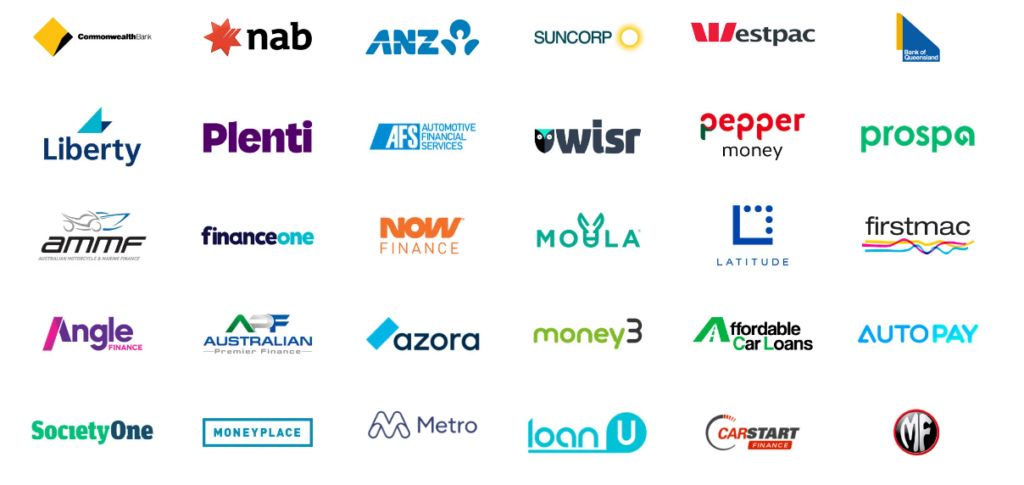How to Spot Hidden Fees in Loan Agreements
A guide to smarter financing
March 16, 2025
At Tow Finance Solutions, we understand signing a loan agreement is a big step. It’s a move toward your car, business, or holiday dreams. But, what’s hidden in the loan agreement fine print? Many Australians find out about extra costs too late. This guide will help you spot hidden fees in loan agreements before they take a big chunk out of your budget.
Hidden fees aren’t always easy to spot. Things like application charges, early exit penalties, or monthly service costs can really add up. We’ve seen clients end up paying 20% more than they expected because they missed the fine print.
This article will explain how fees work and where to look for them.
40+ lenders to choose from

Key Takeaways
- 1. Hidden fees can increase your loan cost by 15-30% over time.
- 2. 70% of hidden charges are listed in the loan agreement fine print, not the headline interest rate.
- 3. Common traps include setup fees, insurance add-ons, and “convenience” charges.
- 4. Always ask lenders to explain every fee upfront—they must clarify by law.
- 5. Tow Finance Solutions lists all fees clearly to avoid surprises, but many lenders don’t.
Let’s uncover where fees hide, why they’re there, and how to protect your money. Knowing what to look for in your next loan could save you thousands.
Understanding Why Lenders Include Hidden Fees
Lenders make loan agreements to balance being clear with making money. Fees might seem confusing, but they’re part of a plan. Let’s look at why they do this.
The Business Model Behind Fee Structures
Many lenders use hidden costs to make more money without raising interest rates. These hidden costs in loans can include fees for admin or processing that aren’t always clear. For example, a bank might advertise a low rate but add small fees to meet profit goals.
This way, lenders can look good on paper while making money from less obvious places.
How Hidden Fees Multiply Your Debt
- A $200 undisclosed charge added at signing could increase your loan principal right away.
- Monthly service fees of $10 might seem small, but over 5 years, they add $600 to your total repayment.
- Early repayment penalties can erase savings from lower interest rates.
These examples show how hidden costs in loans quietly increase what you pay. Small fees add up over time, making a loan harder to manage.

The Psychology of Fee Disclosure
“Consumers focus on the headline rate, making secondary fees an easy place to build profit margins.”
Lenders know most people don’t read documents carefully. Fees are often hidden in fine print or described in technical terms. This makes it hard to identify undisclosed charges quickly.
Visual layouts also play a role. Important fee details might be in less obvious sections of contracts.
Common Types of Hidden Fees in Australian Loans
Looking for a car loan, business finance, or funding for a leisure purchase? Hidden fees can sneak into loan agreements. To find these hidden costs, you need to know where to search. In Australia, loans often have three main types of hidden costs: upfront fees, ongoing charges, and fees for specific actions.
- Upfront Fees: Application fees (usually $200–$500), establishment fees ($200–$1,000), and valuation fees (varies by asset value). These might seem normal, but some lenders add them on top of the quoted rates.
- Ongoing Fees: Monthly account-keeping fees ($5–$50), annual package fees ($150–$300), and direct debit fees ($2–$10 per transaction. These can cost hundreds a year without clear notice.
- Contingent Fees: Late payment penalties (often 4% of the payment), redraw fees (1–2% of withdrawn funds), and early repayment break costs (could total thousands if you pay off a loan early. These depend on your actions and loan terms.
Many of these fees are legal but not always fair. Watch out for vague terms like “processing” or “administration” without clear details. Always ask lenders to break down all costs upfront. Remember, even small fees can add up over time—stay alert to protect your money.
How to Effectively Spot Hidden Fees in Loan Agreements
Protecting yourself starts with knowing what to look for. Here’s how to expose undisclosed loan fees and detect stealth charges in agreements before signing.
Reading Between the Lines: Decoding Financial Jargon
Loan documents use technical terms to hide costs. This table breaks down common jargon:
| Jargon Term | Plain Meaning |
|---|---|
| Administration Charge | Fee for processing your application |
| Facility Fee | Charge for loan setup or maintenance |
| Disbursement Fee | Cost to release funds to your account |
Ask: Does this term add a cost not mentioned in the advertised rate?
Key Sections Where Fees Are Typically Concealed
- Appendices or fee schedules
- Conditions for early repayment or late payments
- Definitions of terms (e.g., “service fee” vs. “service charge”)
Use a red pen to mark anything under “Additional Costs” or “Miscellaneous Fees.”
Questions to Ask Your Lender Directly
Arm yourself with these questions:
- “Are there any fees not listed in the initial quote?”
- “Can you provide a written breakdown of all possible charges?”
- “What triggers penalty fees?”
Trust your instincts—if answers are vague, walk away.
Application and Establishment Fees: What's Reasonable?
When looking at loans, find obscured loan costs by checking upfront fees. In Australia, lenders set different prices for application and establishment fees for car, business, and leisure loans. Knowing what’s normal helps you detect undisclosed charges that could make your total repayment higher.
Standard Industry Ranges for Upfront Costs
| Loan Type | Application Fee | Establishment Fee | Average Total |
|---|---|---|---|
| Car Loans | $0–$500 | $0–$300 | $0–$800 |
| Business Finance | $200–$1,200 | $150–$500 | $350–$1,700 |
| Leisure Loans | $0–$300 | $0–$200 | $0–$500 |
When Application Fees Should Raise Red Flags
- Fees exceeding 5% of your loan amount
- Charges labeled as “processing” or “administration” without clear explanations
- Lenders refusing to provide written fee breakdowns
For instance, a $20,000 car loan with a $1,000 upfront fee is a warning sign. Look at quotes from different lenders to find any oddities. Always ask: “Is this fee negotiable?” Good lenders will clearly explain their fees.
The Truth About Early Repayment Penalties
Early repayment penalties are hidden fees that can take away your savings if you pay off a loan early. These charges are often overlooked but are very important to uncover concealed costs. Let’s explore how they work and their impact on your finances.
Lenders use three main ways to figure out penalties: flat fees, percentages of the remaining balance, or “break costs” for fixed-rate loans. For instance:
| Type | Calculation | Example |
|---|---|---|
| Flat Fee | Fixed amount, e.g., $500 | $500 penalty on a $20,000 loan |
| Balance Percentage | 2% of remaining balance | 2% of $15,000 = $300 penalty |
| Break Costs | Lost interest projected over the loan term | $8,000 penalty on a $100,000 home loan |
These penalties exist because lenders lose money if you pay early. But you can find obscured expenses by asking: “What’s the exact penalty if I repay early?” before signing. For example, paying $5,000 early on a $100,000 loan with a 3% penalty could cost $1,500. Is that worth the savings?
- Ask for penalty clauses in writing
- Compare total cost including penalties vs. no-penalty loans
- Check ASIC’s Moneysmart guide for 2023 penalty limits
“Early repayment penalties often exceed the interest saved,” warns the Australian Securities & Investments Commission (ASIC).)
Lenders must legally tell you about penalties in the contract. If you plan to pay early, try to negotiate to remove or cap penalties during the loan setup. Sometimes, a loan with a slightly higher interest rate but no penalties can save thousands. Always uncover concealed costs before you sign.
Ongoing Service Fees That Can Drain Your Budget
Hidden fees can keep coming back, month after month or year after year. They quietly take money from your savings. It’s important to watch out for these fees in car loans, business financing, or even loans for fun. Even small amounts can add up over time, making loans much more expensive.
Monthly Account Keeping Charges
Lenders often charge monthly fees for “account maintenance.” But do you really need them? A $10/month fee on a 5-year car loan can cost you $600. Look around for different offers to find out if these fees are fair. Ask yourself, is this fee worth the service, or is it just extra profit for the lender?
Annual Package Fees and Their True Value
Annual “package packages” might seem like a good deal because they offer discounts. But they can also hide extra costs. For instance, a $300/year package for a business loan might give you a 0.5% rate cut. But is that saving worth the fee? Check the total cost over the loan term to see if it’s really a good deal.
Hidden Transaction and Payment Costs
- Direct debit fees for automatic repayments
- Extra charges for paper statements
- Penalties for paying off loans early or making extra payments
These hidden costs can cost you $50–$200 each year. Always check your statements to reveal undisclosed fees like transaction charges or “convenience fees.” They might be hidden in small print.
It’s a good idea to regularly check your loan agreement. Small fees can add up over time, becoming a big expense. Be proactive and save every dollar you can. It’s money that goes back into your pocket.
Insurance Products Bundled with Loans: Necessary or Predatory?
In Australia, lenders often add insurance products like consumer credit insurance or gap insurance to loans. Before you agree, make sure to unmask hidden charges linked to these extras. Many people find out these policies are much pricier than buying them separately.
These insurance products are often called “mandatory” but they’re really optional. A 2023 ASIC report showed 60% of add-on insurance sales were misleading about being necessary. To pinpoint undisclosed expenses, compare what your lender charges with what others offer. For example, a $50 monthly loan protection policy might only cost $20 a year elsewhere.
“Add-on insurance complaints rank among the top 10 financial services issues reported to ASIC each year.”
- Consumer credit insurance: Covers repayments if you lose your job
- Gap insurance: Protects vehicle loans exceeding car’s market value
- Loan protection insurance: Covers payments during illness or injury
Ask yourself: Does this cover gaps my existing policies miss? How does the premium compare to standalone products? What happens if I decline? Always ask for written comparisons between what’s bundled and what you can buy separately. Remember, lenders make more money from add-ons than from the loan itself, which creates a conflict of interest.
Use online tools like MoneySmart to compare values. In 2022, the Australian Competition and Consumer Commission fined three major banks $14.5 million for deceptive insurance upselling. Being careful could save you over $10,000 over the loan term.

Comparing Loan Options: Looking Beyond the Interest Rate
Choosing the right loan is more than just looking at the interest rate. Hidden fees can add thousands to your total repayment. It’s important to uncover these hidden costs. Start by understanding Australia’s comparison rate system and the tools that help you see through marketing claims.
The Comparison Rate Explained
The comparison rate combines the interest rates with standard fees. But it doesn’t cover all hidden costs. For example, early repayment penalties or insurance upsells are often left out. Always ask lenders to explain what’s not included.
- Included: Most fixed fees (e.g., processing, document handling)
- Excluded: Optional insurance, late payment penalties, redraw fees
Using Loan Comparison Tools Effectively
Tools like RateCity or Canstar rank loans by comparison rates. But use them wisely. Here’s how:
- Input your exact loan details (amount, term, type)
- Compare at least five lenders
- Check lender websites directly for fine print
Be careful of comparison sites funded by lenders. They might show bias in their rankings.
Real-Life Examples of Fee Differences
| Loan Type | Advertised Rate | Comparison Rate | Total Repayment Difference |
|---|---|---|---|
| RACQ Car Loan | 4.99% | 5.85% | $2,200 extra over 5 years |
| ANZ Business Loan | 5.49% | 6.32% | $4,500 extra over 7 years |
| Virgin Money Leisure Loan | 5.24% | 6.10% | $1,800 extra over 4 years |
These examples show how hidden costs can wipe out savings from lower interest rates. Always check the lender’s full fee schedule.
Your Legal Rights Regarding Fee Disclosure in Australia
In Australia, laws make sure lenders tell you all about loan terms. If you find undisclosed charges or obscured fees, you can use the National Consumer Credit Protection Act 2009 (NCCP Act) and ASIC guidelines. These laws mean lenders must be clear before you sign anything.
“Lenders must not engage in misleading or deceptive conduct,” states Section 12DA of the NCCP Act.
Lenders must give you a pre-contractual disclosure statement before you agree to a loan. This statement should list all fees. If it misses important charges, it might break the law.
- Check all documents for missing fee details.
- Write to your lender to ask for full disclosure.
- If it doesn’t work, complain to the Australian Financial Complaints Authority (AFCA).
- Get legal advice if fees hurt your finances.
| Action | Deadline | Outcome |
|---|---|---|
| AFCA complaint | 3 years from discovery | Free resolution process |
| Legal action | Up to 6 years | Potential compensation |
Lenders must tell you all about fees upfront. If they don’t, you’re protected by law. Use these steps to stand up for your rights.
Conclusion: Protecting Yourself from Unexpected Loan Costs
Spotting hidden fees in loan agreements and uncover covert charges needs a proactive approach. Review terms carefully, question unclear costs, and use comparison tools. This way, you can avoid costly surprises.
Choosing lenders who openly disclose fees is key. This ensures loans fit your budget. Remember, even small charges like service fees or insurance add-ons can affect your repayment totals. Always check the fine print.
At Tow Finance Solutions, we value transparency in all financing options. Whether for cars, business needs, or leisure purchases, our team explains every cost upfront. Contact us at (07) 4410 3375 or [email protected] for clear, no-surprise loan agreements. We’re committed to helping you make informed decisions without hidden traps.
Your financial health relies on understanding every term. Stay vigilant, ask questions, and choose partners who value clarity. With these steps, you’ll secure loans that work for you—not against you.

